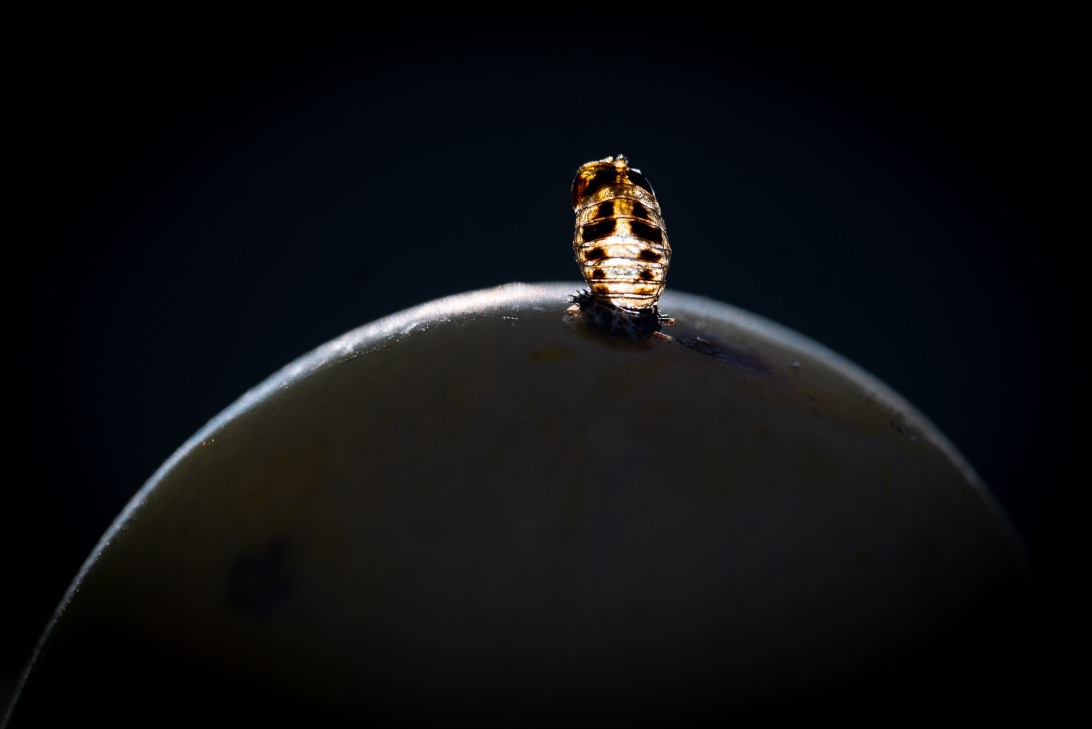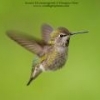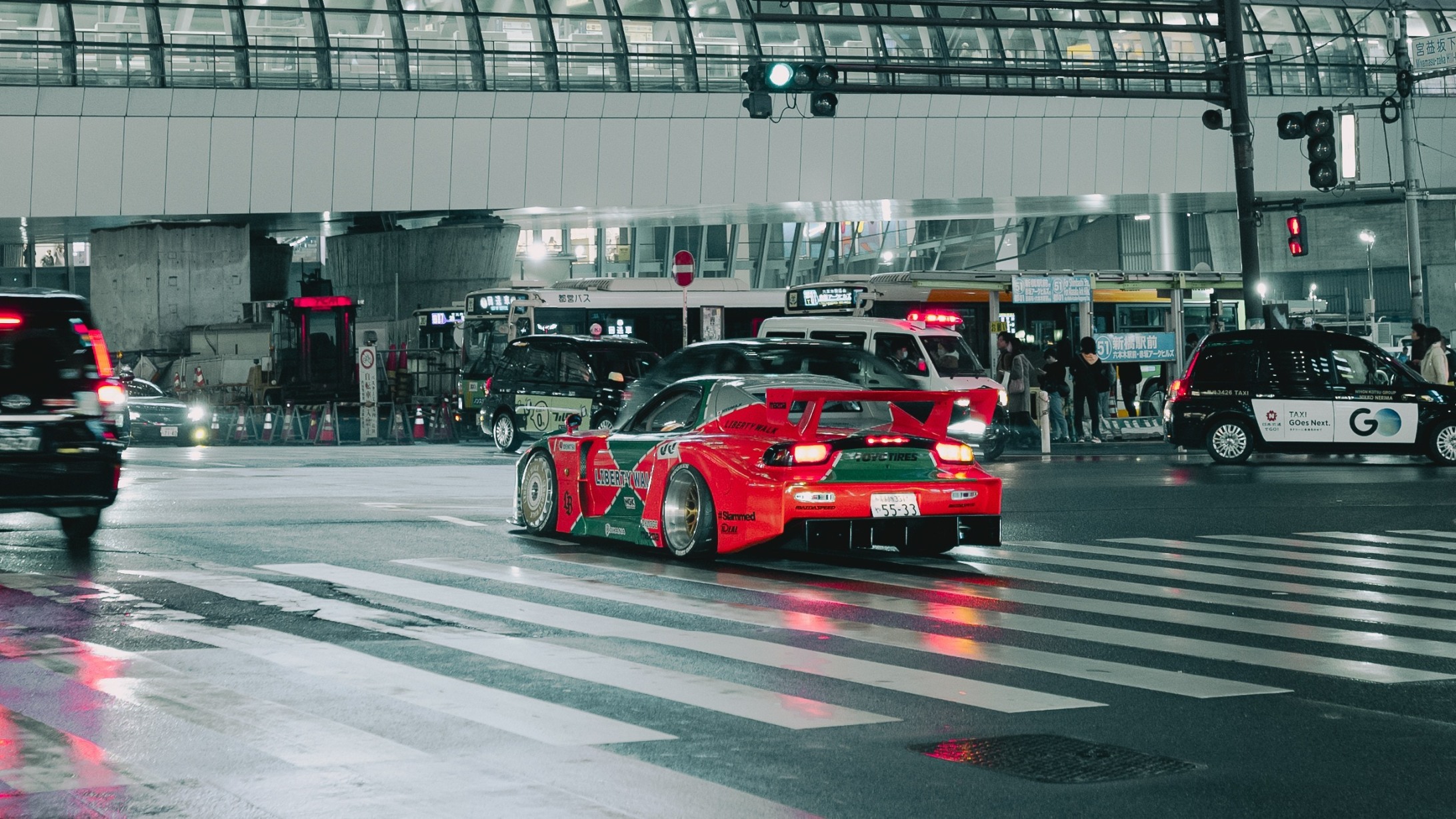Search the Community
Showing results for tags 'apo'.
-
In a recent interview in Austrian Der Standard Peter Karbe was asked which camera and lens would be his preferred choice. The answer was "not an easy one", but it would be M11 and APO-Summicron 35. "STANDARD: One last question: If you had to choose a combo, what would be your camera and your lens of choice? Karbe: The M11 and APO-Summicron 35mm. But that's one of those questions... which of your children do you like best? If I had to choose, I would use this combination." Here is the link to the full (unlocked) Peter Karbe Der Standard interview (in German) by Mickey Manakas, where he speaks about the compromise in building the Noctilux f/0.95 and its evident flaws, the "Leica Look" myth, his views on smartphone photography, his pride in personally calculating the optical formula for Summilux 50 ASPH and many other cool topics: https://www.derstandard.at/story/2000144541043/leitender-optikexperte-bei-leica-wir-waren-vorreiter-bei-der-digitalisierung
- 42 replies
-
- 11
-

-

-
- summicron
- peter karbe
-
(and 5 more)
Tagged with:
-
Please post your images at closest focus made with this Karbe gem, the 75mm f2 APO Summicron-M ASPH. It apparently has a similar reproduction ratio (highest at 1:7) to the new close focus Summilux 50 ASPH II 2023 (highest at 1:6.4). I am especially interested in your images with humans (portraits, sensual nudes, whatever you do), but any other subject at close focus will also do fine. Please no 75 lux or 75 Summarit or 75 SL.
-
Voigtlander APO-LANTHAR 28mm f/2 Aspherical VM for Leica M-mount, ladies and gentlemen. According to Cosina it is their “highest performing wide VM lens in Voigtländer’s history.”
- 36 replies
-
- 5
-

-
- voigtländer
- apo
-
(and 4 more)
Tagged with:
-
The compact 90mm f/2 joins the Ultron line in VM mount. https://petapixel.com/2024/12/13/the-voigtlander-apo-ultron-90mm-f-2-is-an-extremely-compact-portrait-prime-for-m-mount/ https://www.cosina.co.jp/voigtlander/en/vm-mount/apo-ultron-90mm-f2/
- 101 replies
-
- 11
-

-

-
- voigtander
- apo
-
(and 3 more)
Tagged with:
-
I am curious about different peoples opinion about how effective are Leica's slide-out hoods. I have seen conflicting posts for some time. As an example one person thinks the 75mm APO-Summicron is optically an excellent lens, except the lens hood is ineffective so the lens is a poor design. Another thinks the lens hood on the same lens is just fine. I know I am talking about a variety of lenses over several generations. But I have a variety of lenses from several generations. In some cases I have purchased additional hoods from third parties, such as from Mr. Overgaard, and some I have come to hate, like the plastic hood on the last version of the 50mm Noctilux f/1. One of the lenses I am most curious is the 50mm APO-Summicron, but I would like to ask about others as well...
-
We already have a very extensive 'Mandler Magic' topic, but as much I am keen on Mandler's signature look and his contribution to the "Leica glow", there is another very distinguished gentleman in the 'House of Leica' that as a leader of Leica's optical design team since 2002 gave us a bunch of new high performance M-Lenses and pushed the terms FLE, ASPH and APO towards modern Leica perfection. He was the guy that had the balls to say Dr. Mandler's 75mm Summilux 1.4 was his *least* favorite design and went on to "Make Summilux great again" - all the way down to 21mm. Show us some of the "clinical look" of the Peter Karbe magic and do tell what lens he designed is your favorite...
- 500 replies
-
- 108
-

-

-
Hi, I have a 11673 lens paired with a 12470 lens hood. I really love the short and lightweight hood on the 11699. I thought since they are both 35 F2 lenses, maybe they could share the same hood? So I bought a new hood and realized that wasn’t the case. Fortunately, the hood for the 11699 is larger than the 11673 lens. I’m considering drawing up a 3D model and having a CNC factory make an adapter ring. The problem is, I can hardly find the thread specifications for the lens hood in any of the Leica manuals. Does anyone happen to know the thread specifications for this hood? Let me know if you need further adjustments! Thank you
-
Just shot with a set of Leitz M 0.8 lenses. They are 8 M-mount cinemodded lenses consisting of 5 summiluxes (21, 24, 28, 35, 50), a noctilux (50) and two summicrons (75 and 90). Two 0.8 pitch rings for diaphragm and focus pulling, uniform filter diameter of 77mm and matte box diameter of 80mm. Used with RF to M adapter on RED Komodo. Avg. price per lens $10K.
-
Hi Guys, Am fairly new to Leica (6 months in) and I would like to seek your advice on which 35mm lens to get. I currently use a M240 body with a 60mm F1.2 Konica Hexanon and a 50mm Summicron APO. I am looking to add a 35mm lens to compliment my existing collection (and will be looking at add a 28mm Elmarit when the new one releases end of the month). I am considering the follow: 35 Summilux Pre-ASPH 35 Summicron Pre-ASPH Version 1 35 Summicron Pre-ASPH Version 4 35 Summicron ASPH (2016 edition) After doing some extensive research, I feel like the 3 Pre-ASPH lens may be a better compliment as it is softer / has more of a leica glow (since my 50mm APO and the 28mm Elmarit are both bitingly sharp)? I was originally going to just get a 28 and 50 and NOT the 35 since it seems to be too close to the other 2 focal lengths, so I am now thinking maybe getting something with more of a unique characteristic). Just wondering what all your thoughts are and why you think so? Your kind assistance is very much appreciated. Thank you. Best Regards, J
-
I had my heart set on getting a used Noctilux 50MM f/0.95, but I also found a used Noctilux 75MM f1.25. I wanted the 50 because I regret selling my Summilux ASPH 50MM - I really miss that dreamy/creamy look! The 50 Noctilux could be a suitable replacement, with an extra stop to boot! The "more usable" focal length is another plus. On the other hand, the 75 is appealing to me because it is a more modern lens with less CA/purple fringing, less vignetting, and a sharper look. I also don't have any 75MM yet. I shoot a lot of portraiture, but admittedly it's more environmental, so not totally sure if 75MM would be the right FL anyway. Still, I think I could make use of the 75. Any thoughts on which one would be "better," all things considered? Do I get both?! FYI - I am shooting on an M10 and also have a 50 APO and a 35 Lux FLE. Thanks all!
- 44 replies
-
- 1
-

-
- noctilux
- noctilux75mm
- (and 5 more)
-
So much written about the floating element wandering out of alignment and some other focus issues of this lens by many frustrated users goung through two, three, four copies. All the gathered information seems to indicate that these problems were present for samples made somewhere until 2018, so my question is, does the only SILVER special edition 11701 (batch of 300) from February 2020 exhibit any of the much debated woes regarding its FLE or did Leica tighten the tolerance? Proud owners, also paste your pictures of this very rare gem.
- 17 replies
-
- apo
- apo summicron
-
(and 3 more)
Tagged with:
-
The Karbe Lux masterpiece is finally getting a facelift. 11 blades, 45cm close focus, rumored performance tweaks, same ol’ price. (Rumor has it it will be announced next week).
- 314 replies
-
- 1
-

-
- summilux
- summilux 50mm
-
(and 2 more)
Tagged with:
-
-
I have added M240 + APO 50mm setup in my studio photography workflow (in parallel with Hasselblad H4D-50 which is my main camera) and all I can say is I’m amazed with the quality and resolution of this lens. Contrast, sharpness and clarity on the glass and dynamic range of M240 sensor is very impressive! I have shot this photo with M240 + APO 50mm + Broncolor Para 88 with grid (main light) + Broncolor Grafit A4 pack + Elinchrom Octa Light Bank (fill light). Post process with Photoshop and Lightroom. Thanks!
- 65 replies
-
- 56
-

-
I found a Black-tailed Hare ("Jackrabbit") this morning in Yolo County California. Technical stuff: R8/DMR, 280mm f/4 APO-Telyt-R, shoulder stock & monopod. All comments welcome.
- 12 replies
-
- 11
-

-
21mm APO in Rainny Night This is a harsh test for the all weather capability of my SL2 and SL 21mm f/2 APO. It was a rainny night at Shibuya, Tokyo. When this red modifed Mazda RX-7 sports car passing me, I picked up my camera right away and shoot in AF mode. The lens did hunt a bit in dark+rain but eventually locked her target, I missed the moment which I wanted the car on the crossing, anyway. A subject can't stand out without a suitable background. Japan streets and cars are absolutely clean, sign board light is bright, the reflection from the wet asphalt road looks gorgeous to my eyes. I generally won't shoot streets under the rain in other places, but Japan is an exception. This is my very first day shooting with my SL 21mm APO on SL2 , the prictures are sharp centre to corner, AF is reliable but not snappy in dark. The picture was taken with f/2, 1/60, ISO320, colour graded in ACR. And this image has been cropped to just 3.4MP from the original 47MP output. THIS LENS CHANGE MY PREFERNCE. If you need the depth of field anyway, why bother to carry a heavy zoom or second lens anymore, if the photos are for sharing here and IG. Thanks to the high pixel sensor and the unbeatable 21mm APO, I believe this could be my ultimate answer.
-
Hello fellow R users, I'm a facing a little dilemma and decided to count on your experiences to make a decision, if you don't mind. Basically, I am looking for a mid-range tele lens to use in small valleys especially. But I'm living in a big city and remain there most of times, though... So I came across two classifieds selling these lenses at quite a good price. Here's my current state of reflection: APO 280/4 Pros : legendary quality, APO will help for difficult lighting conditions I guess. A bit lighter than the VE. Slightly brighter than the VE (well, it's more of an anecdote at this point). Cons : fixed focal (280mm isn't that versatile in a city, huh?). VE 105-280 Pros : good reputation albeit less praised that the 280/4. More versatile. 500€ cheaper. Cons : heavy zoom, tripod required. Not APO. Price isn't that important (I prefer to wait a bit more if that helps), and I will use either lens on my tripod anyway. Also, I am especially careful on vignetting... and on this point, the VE seems to be better! (VE charts available here, and 280/4 charts here) That sounds surprising since fixed focals are usually more optimised... Finally, my longest lens at present is a Lux 80. I consider buying an Apo-Extender later; even though not on par with the 90AA or 180 Apo (), results should be acceptable. And the gap problem posed by the 280/4 would be eased. Still, I'm unsure about all this... Do you think the quality of the fixed 280/4 (vignetting wise, especially) is worth giving up the versatility of a zoom, for the city person that I am? Maybe the zoom feature of the VE is more psychological than practical after all, since I will have to use a complex setup with a tripod? Any hint will be appreciated!
-
A tiny bit of fluff, more voice than flesh & bone: This bird was one of hundreds in the Yolo Bypass wildlife area between Sacramento and Davis. The song is the bird's territorial defense; a highly variable song, a neighboring wren will often repeat specific riffs of his neighbor's song. technical stuff: Leica R8/DMR, 280mm f/4 APO + 2x APO-Extender-R, shoulder stock & monopod. All comments welcome.
-
The Oak Titmouse is a member of family Paridae which inludes Chickadees and Tits (I didn't name them, I'm just the messenger!). The Oak Titmouse is primarily a California resident, with a few populations in Baja California to the south and Oregon in the north. The Oak Titmouse, like all Paridae, are the definition of the word kinetic. As its name implies it's preferred habitat is oak woodlands, where they nest in a tree cavity; this morning I found a pair bringing breakfast to the kids: technical stuff: R8/DMR, 280mm f/4 APO + 2x APO-Extender-R. All comments welcome.
-
The Davis (California) Wetlands is part wastewater treatment facility, part wildlife habitat... I chose to emphasize the wildlife habitat last week In order of appearance, Least Sandpiper, Western Sandpiper, and Long-billed Dowitcher x2. All photos: R8/DMR, 280mm f/4 APO, 2x APO-Extender-R, monopod & shoulder stock. All comments welcome.
-
The California Foundation for Birds of Prey held an Open House yesterday, where several non-releasable birds were on display. Among them was Cleopatra, a young female Golden Eagle who was found near death by a Sacramento-area rancher. Cleopatra had contracted West Nile virus (thus the name) and though she is now fully capable of flight, she would not survive in the wild because the virus led to neurological damage which prevents her from seeing clearly at close distances. The first several months of captivity were terrifying for Cleopatra. She paniced at any nearby movement and it was only due to the patience and persistence of her handler (a licenced falconer) that she learned to trust her captors. Unusual for a raptor, Cleopatra has bonded with her handler and even appears to enjoy his company. One of the foundation's goals for Cleopatra is to train the her to accept other handlers because she is expected to live 50 years or so, and will out-live her handler. The beaks of captive raptors don't get as much abrasion as in the wild so they must be trimmed occasionally, much like toenails are. Cleopatra's beak was trimmed to the correct length the day before the open house but there were not enough people handy to keep her still so that the beak could be shaped properly - thus the blunt, chopped off appearance. Technical stuff: R8/DMR, 280mm f/4 APO, shoulder stock & monopod. Leica-related notes: the open house was well-attended and at least two visitors recognized the camera. Two also noted the shoulder stock/monopod rig and its highly desirable combination of stability and mobility. All comments welcome.
-
hallo allerseits, auf die gefahr hin, das sich alteingesessene leicaner und forumisten wieder über die unwissenheit und dreistigkeit der "neulinge" aufregen, stelle ich meine frage. was ist der unterschied zwischen normalen objektiven und jenen mit dem zusatz apo, außer das letztere wohl entschieden neuer und um etwa den faktor 5 (gefühlt) teurer sind? ich lasse mich auch gerne auf alte links verweisen - ich war nicht ganz in der lage mich auf einen schlag durch das ganze leicalatein dieses forums zu schlagen wer ist so nett und führt mich ein bissl ins leicanersein ein?



















